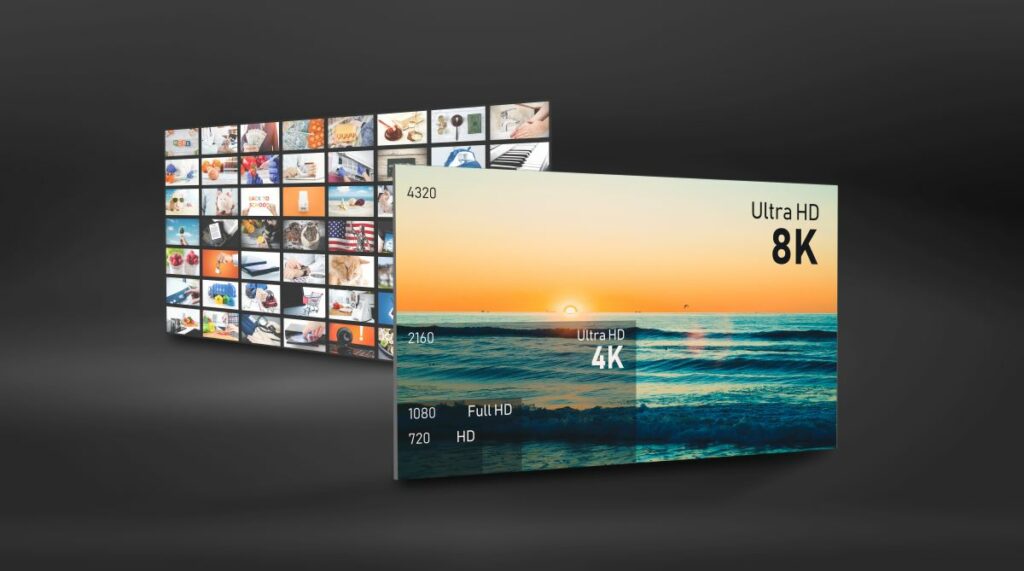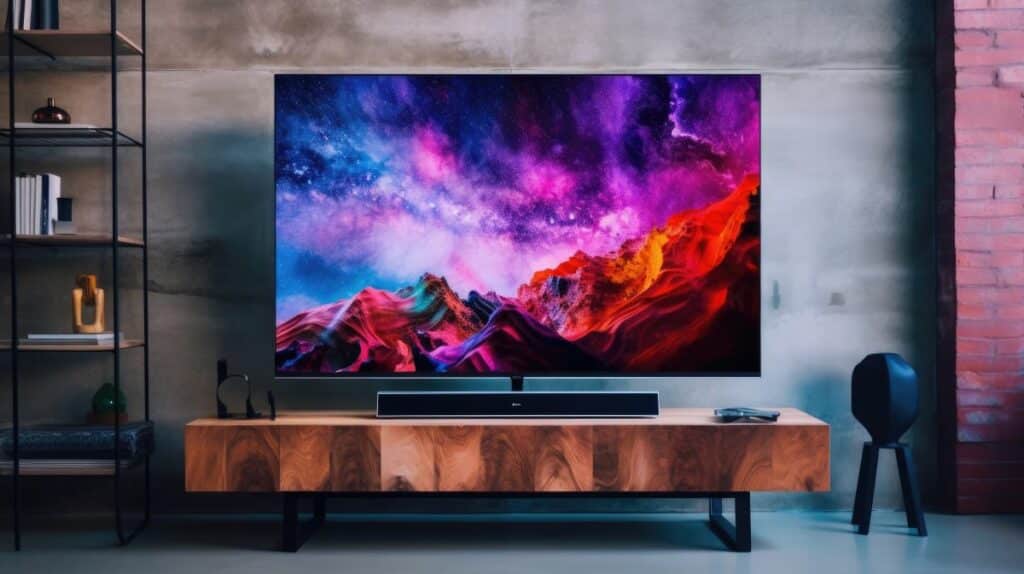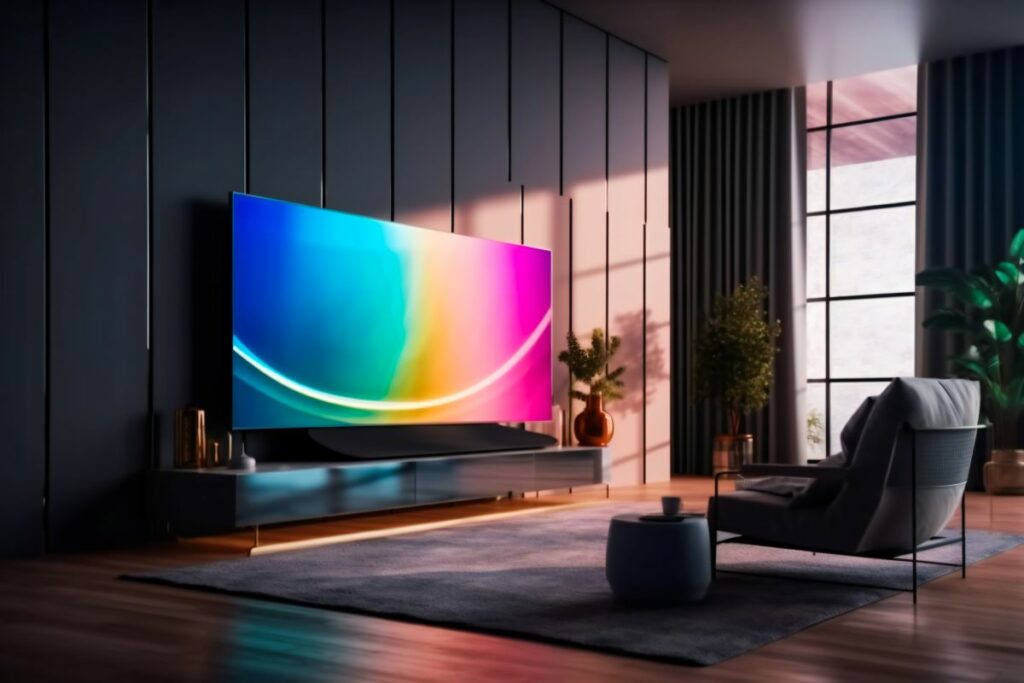the essentials in brief
4K captivates with a something higher horizontal resolution. For laypeople, however, this is hardly noticeable.
At the end of the 90s it became clear that the SDResolution was no longer sufficient for the public and the industry. You can find out more about this here.
In addition to the resolution, the refresh rate, screen size and HDR support are important. You can find out here why you should pay attention to this.
The difference between UHD and 4K can be confusing for many consumers. The terms are often used synonymously, but they do not mean the same thing! We'll show you the Definitions of UHD and 4K, explain the technical differences between the two resolutions and clarify when you should prefer which resolution.
Contents
UHD and 4K: Small but subtle differences

UHD and 4K are terms used in the world of image and video technology to describe high-definition content. Although they often used synonymously there are some differences between the two terms.
UHD stands for "Ultra High Definition" and refers to a higher image resolution than the traditional HD (High Definition). UHD screens usually have a resolution of 3840 x 2160 pixels, which is also referred to as "4K UHD".
The term "4K" however, refers specifically to the horizontal resolution of about 4000 pixels. 4K resolution is typically 4096 x 2160 pixel.
The main difference between UHD and 4K is the resolution. UHD has one slightly lower horizontal resolution of 3840 pixels compared to 4096 pixels in 4K. In practice, however, the differences between UHD and 4K are for most consumers barely perceptible, as both resolutions offer impressive image quality.
Tip: Since the difference between UHD and 4K is hardly noticeable for laypeople, you don't have to worry too much about it.
Development of UHD and 4K
The development of UHD and 4K started in the 1990 years ago, as digital technologies became more and more popular in the entertainment industry and in the professional field. It has been recognized that traditional analog video formats such as Standard Definition (SD) are no longer on the rise demands of viewers and the industry were fair.
4K as a term emerged from digital cinema, which used a horizontal resolution of about 4000 pixels. UHD was later developed to provide higher resolution for television and home theater applications.
key fact box
The terms UHD and 4K were defined by the Consumer Electronics Association (CEA) and the Digital Video Broadcasting Project (DVB) officially recognized to standardize the technical specifications for high-definition televisions and content.
The development of UHD and 4K has been made possible by advances in digital imaging technology and the availability of more powerful computing and processor technologies. These technologies allowed that Processing and display of higher and higher resolutions, which eventually led to the superb UHD and 4K screens we know today.
UHD or 4K: That's how you decide

Deciding whether you need UHD or 4K depends on a variety of factors, including the type of content you're watching, the size of the screen, and your personal vision. Here are some considerations:
- content source: If you watch movies or videos from streaming services or Blu-raydiscs, chances are the content is available in UHD or 4K. Many modern films and series are produced in these high-resolution formats.
- screen size: The larger the screen, the clearer the differences between HD, UHD and 4K. On large TVs or projection screens, the higher resolution of UHD or 4K can result in more impressive picture quality.
- seat pitch: The optimal seating distance to a UHD or 4K screen depends on screen size and resolution. If you sit closer to the screen, you can better perceive the higher resolution.
- Budget: UHD and 4K TVs tend to be more expensive than traditional HD TVs. If your budget is limited, you may need to consider paying the higher price for the improved resolution.
In recent years, UHD and 4K TVs have become increasingly popular as the prices dropped and more and more content is available in these formats. Technology is constantly evolving and it's expected that image quality will be even more impressive in the future.
Additional information: After the introduction of UHD and 4K, higher resolutions like 8K and even higher could become the standard. This would result in even more impressive image quality and provide an even more immersive viewing experience.
Other important aspects when buying a TV

When buying a TV, you should pay attention to other important factors in addition to the resolution best viewing experience to obtain.
The screen size is a crucial factor. The TV should match the size of your room and your personal viewing distance. A TV that is too big in a small room can be overwhelming, while a TV that is too small in a large room can limit the viewing experience.
The Refresh rate is also important. A higher refresh rate, measured in Hertz (Hz), leads to smoother movements, especially in fast-action scenes or sports broadcasts.
Watch out for those too HDR (High Dynamic Range) support. TVs with HDR offer an expanded color gamut and greater contrast range, resulting in more vivid and realistic images. HDR content is becoming more and more common, so it is advisable to choose a TV with HDR support.
At the same time Energy Efficiency now an important aspect for many consumers. Check the energy efficiency class of the TV to ensure energy-saving operation.
Tip: Last but not least, you should pay attention to the warranty conditions and customer service of the manufacturer to get reliable support in case of problems.
By considering these factors alongside resolution, you can make sure you're getting the best TV for you that offers an immersive viewing experience and suits your needs.
High resolution, big moments - with UHD and 4K
For everyone who likes Movies and videos of the highest quality enjoy, UHD and 4K are excellent choices, especially on big screens or projection screens. Technology is constantly advancing and expect resolutions to become even more impressive in the future.
Regardless of what you choose, you will be able to enjoy one breathtaking picture quality that brings to life the beauty and detail of movies, video games and other visual content.

![DYON Smart 55 AD-2 139 cm (55 inch) Android TV (4K Ultra-HD, HD Triple Tuner, Prime Video, Netflix, Google Play Store for DAZN, Disney+ and much more, Google Assistant, BT remote control) [Mod. 2023]](https://m.media-amazon.com/images/I/512cSXaTCSL.jpg)